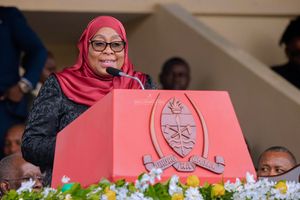Shared EA border posts on scrutiny

Arusha. Performance of the recently established one stop border posts (OSBPs) in East Africa will come under scrutiny during an on the spot assessment by the regional lawmakers.
Fresh from the recent session in Kampala, the East African Legislative Assembly (Eala) members this week began a mission to assess the progress of the regional institutions including OSBPs.
The jointly operated and shared facilities on the visit schedule include the famous Namanga and Holili on the Tanzania/Kenya border as well as Malaba on the border between Kenya and Uganda.
Others are Katuna/Gatuna on the Uganda/Rwanda borderline, Kabanga/Kobero (Tanzania and Burundi) and the Rusumo OSBP along River Kagera that separates Tanzania and Rwanda.
"The on-spot assessment commenced yesterday (Monday) and runs up to February 23rd", said Bobi Odiko, the spokesperson for Eala, adding that the visit will cover other infrastructure projects.
One of the two groups will inspect projects along the northern corridor; Mombasa through Nairobi and Kampala to Kigali while another will do the same on the central corridor; Dar es Salaam to Bujumbura.
OSBPs which are being established along the key routes at the borders of the East African Community (EAC) member states to lessen time in exiting one country and entering another have come under scrutiny for some time especially from the regional MPs.
For instance, an on the spot assessment carried out in 2015 by Eala members found out that some of them can turn into 'white elephants' due to unwarranted delays to complete the basic structures or failure to operationalize them.
One of those often cited is the Namanga border post between Tanzania and Kenya which despite completion of the main structures some years back, was yet to be operationalized and services synchronized into one system due to delay in installation of vital electronic devises.
At the unified border posts, Immigration, Customs, bureaux of standards, psychosanitary inspections, goods clearance and allied services are done under one roof for both countries unlike in the past.
Nearly a dozen of them have been constructed in key border areas through financing from the Japan International Cooperation Agency (Jica) and TradeMark East Africa, the main aim being to facilitate trade.
Business analysts say once fully operationalized, efficiency of movement of goods and people at the border posts would improve by between 30 and 40 per cent, hence acting as a catalyst in promoting cross border trade and investments.
Late last year, the EAC secretariat embarked on training of 450 customs officers and other cross border operatives - 30 for each of the 15 formal OSBP - and other facilitators to man the facilities.
The training will extend to June this year, according to Stephen Analo, a tax expert with the Arusha-based secretariat who told The Citizen recently;
"The objective is to create the same cadre of personnel in the six Partner States with the necessary skills and competencies to operationalize and manage OSBPs".




